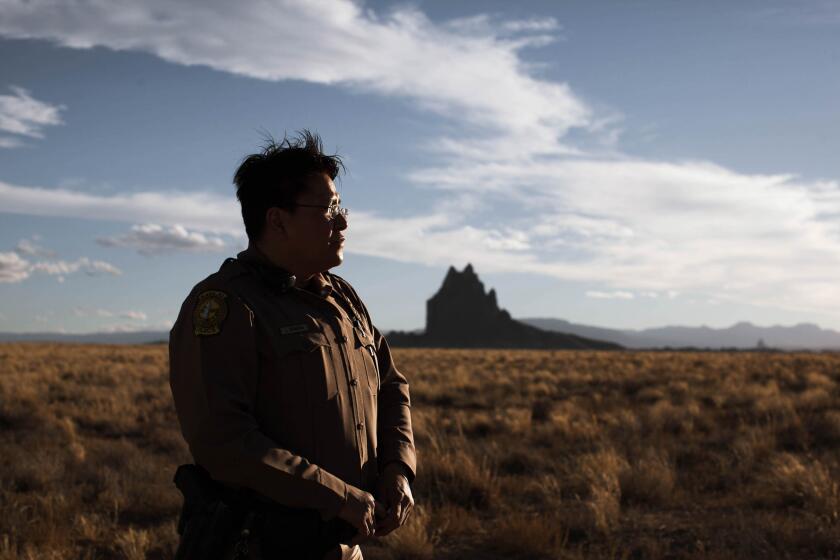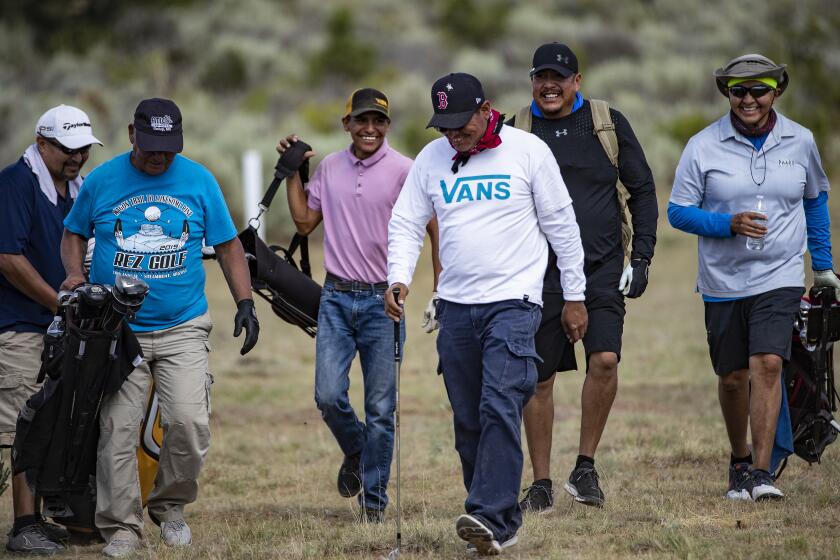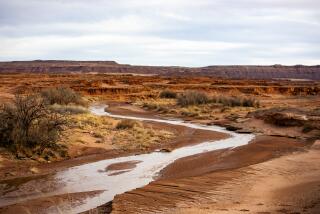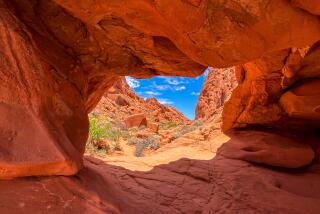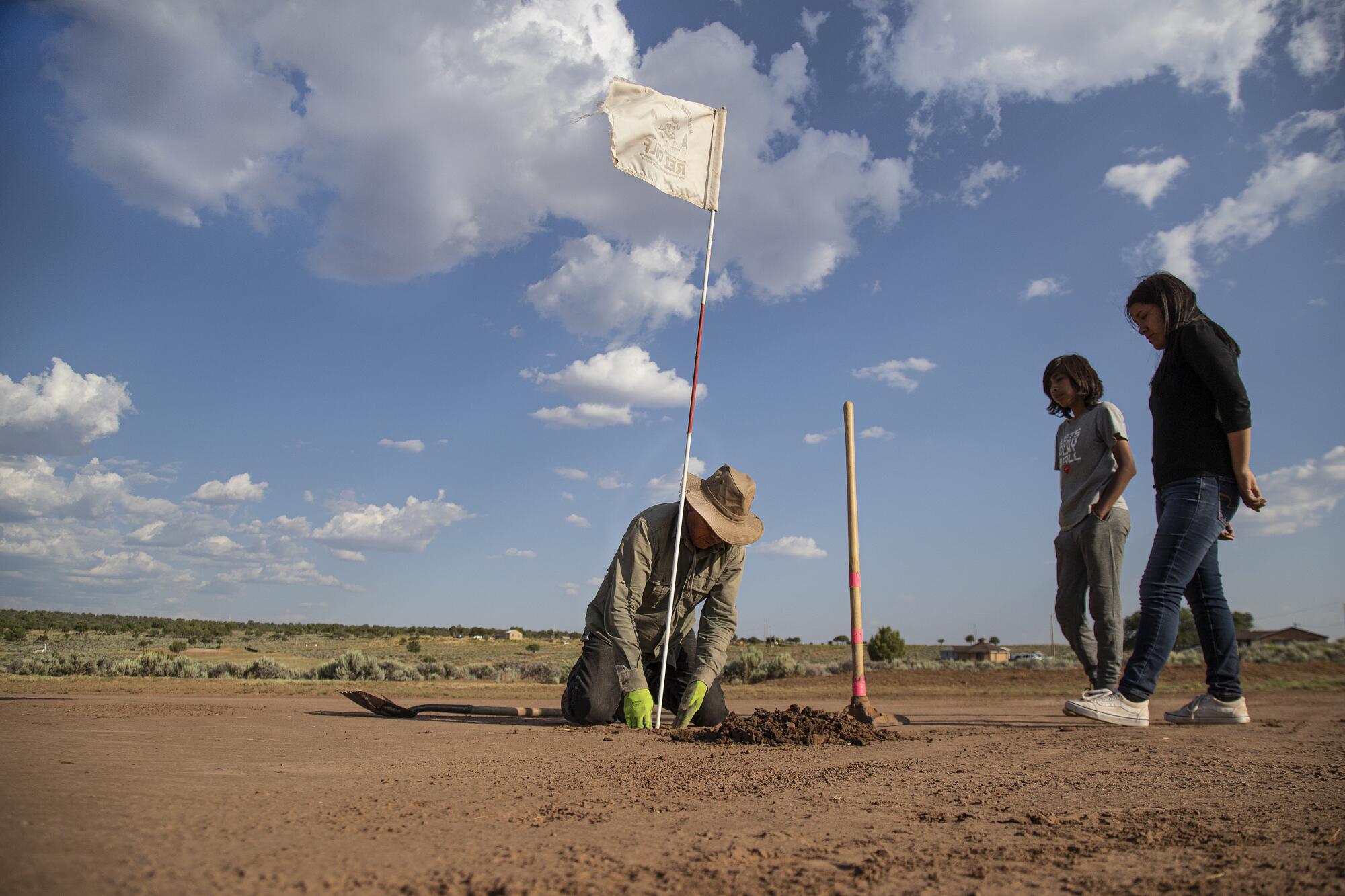
A Native American version of golf is gaining popularity on the Navajo Nation reservation, where duffers play on ‘browns,’ not greens.
STEAMBOAT, Ariz. — It was the morning of the big tournament, and Donald Benally walked the course making sure everything was in place.
The goats were penned, the mud swept and the outhouse behind tee box No. 3 stood ready for service.
“You don’t see mud on a regular golf course,” observed 54-year-old Benally. “We don’t have greens. We have browns.”
Beneath his feet lay the odd putter head or splintered driver, victims of hidden rocks.
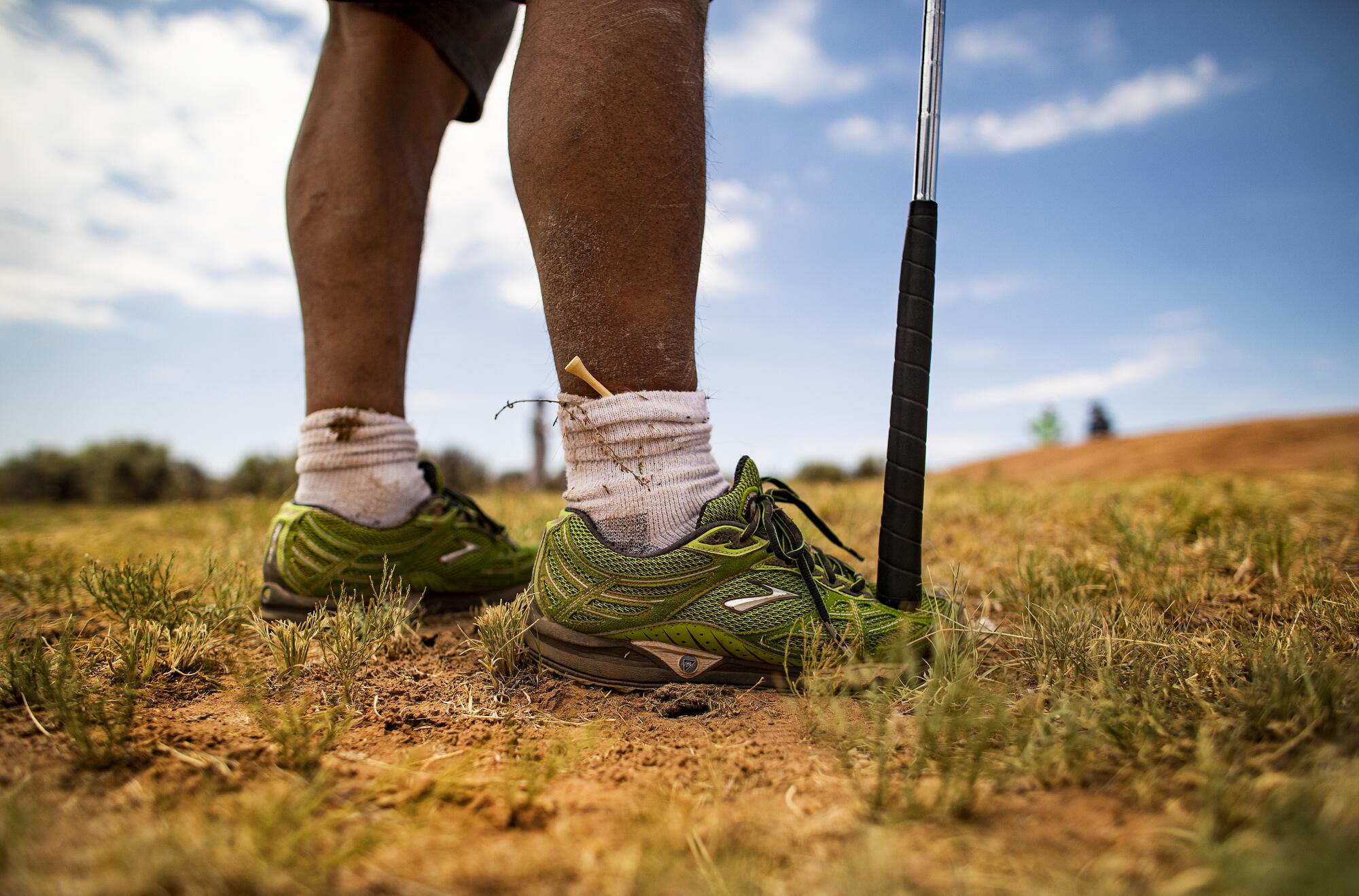
There was dirt but no grass. Sage, cedar and rabbitbrush covered large swaths of the course.
“They are all important to the Navajo,” Benally said. “We use them in healing ceremonies.”
He plucked a few pungent sage leaves and chewed them.
“Strong medicine,” he said.
As golf courses go, Wagon Trail to Lonesome Pine does little to conjure the world of Brooks Koepka or Rory McIlroy. Think manicured Augusta. Think lush Pebble Beach. Then think the exact opposite. This is “rez golf,” a Native American twist on an ancient sport that is swiftly gaining popularity here on the Navajo Nation reservation.
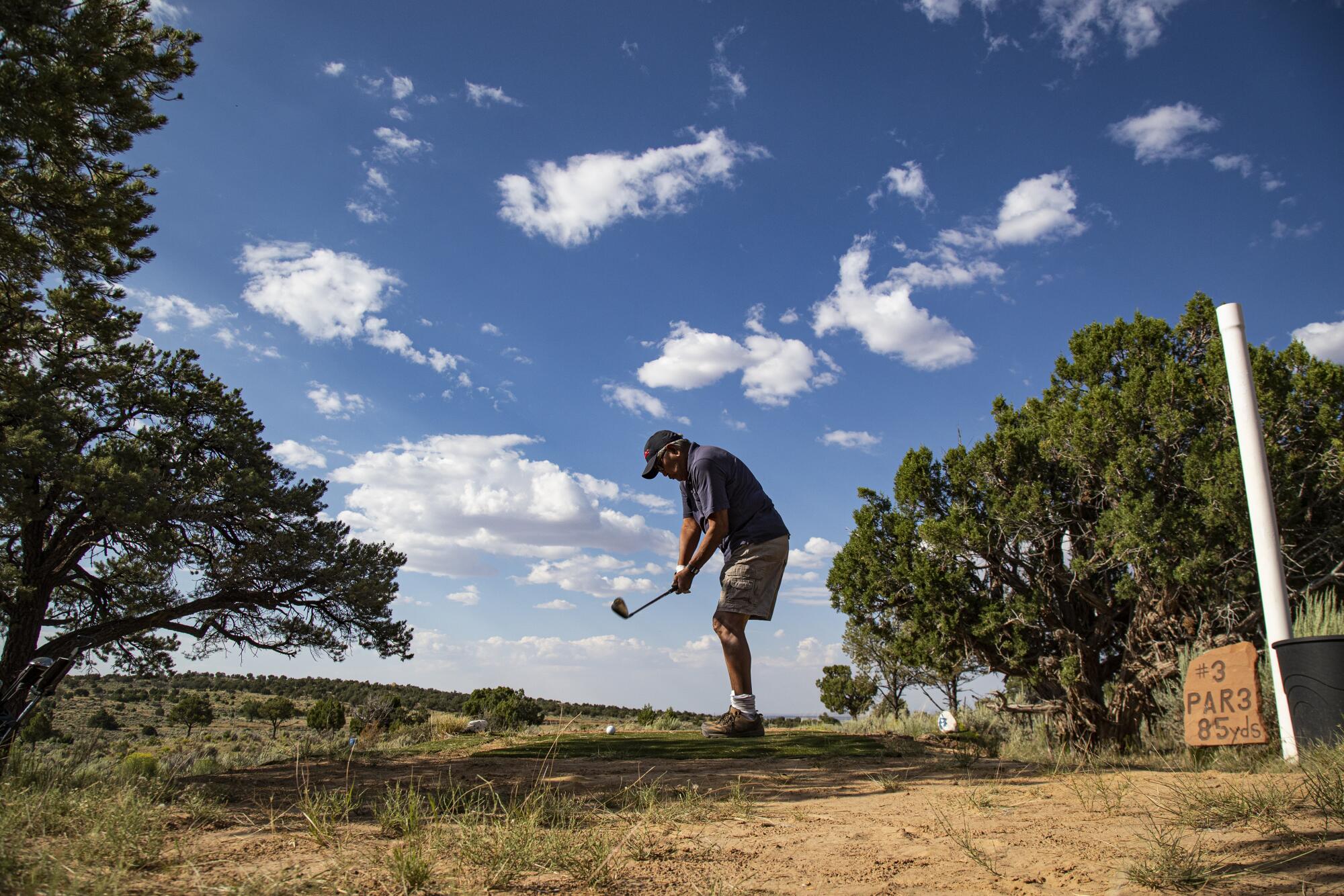
Rez golf, like rez life, is hard — punishing at times. Linger on a brown too long and red ants bite the ankles. Balls are lost forever in spiky sage. The sun is merciless, golf carts absent and booze illegal. An errant goat, sheep or horse can delay play or spoil a shot.
Column One
Column One is a showcase for compelling storytelling from Los Angeles Times.
But in an impoverished region where unemployment is over 40%, recreation scarce and drugs and alcohol constant temptations, a few holes and a thrift store club can be a welcome diversion. More than a dozen courses have sprung up on the Navajo Nation. Most holes are just buried tin cans or plastic cups marked by sticks or plastic flags.
Wagon Trail to Lonesome Pine, one the biggest courses on the West Virginia-sized reservation, began 15 years ago with two holes a hundred yards apart.
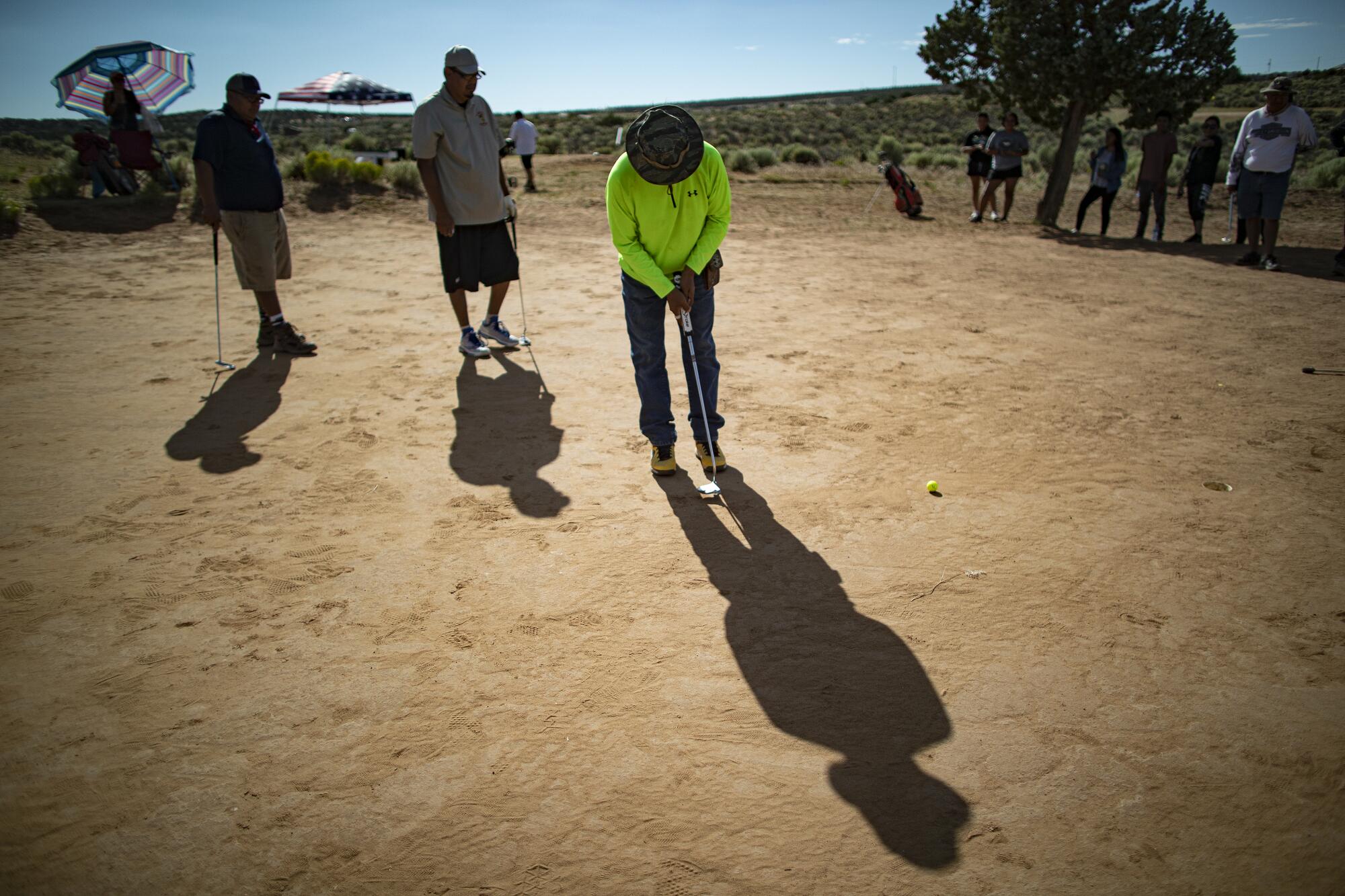
Benally, his brother Joseph and cousin Freddie Yazzie gradually expanded it to nine holes using a tractor and shovels to create fairways and browns. It’s a short course. Six of the holes are par 3, the rest par 4.
If tees couldn’t penetrate the hard ground, golfers jammed tees into slits cut into squares of artificial turf taken from a local high school football field. Playing was free.
“At the time there was nothing here,” Yazzie said. “This is how it all got started.”
Now people — mostly Navajos — come from all over to compete in their annual Rez Golf Tournament. This year’s tourney was held in July and cars began parking along the dirt driveway by 8 a.m. Yazzie jammed the 1960s hit “Sugar, Sugar” on the stereo beneath a canopy. Grills were set up on the porch of the new clubhouse.
A few players got in some pre-round practice.
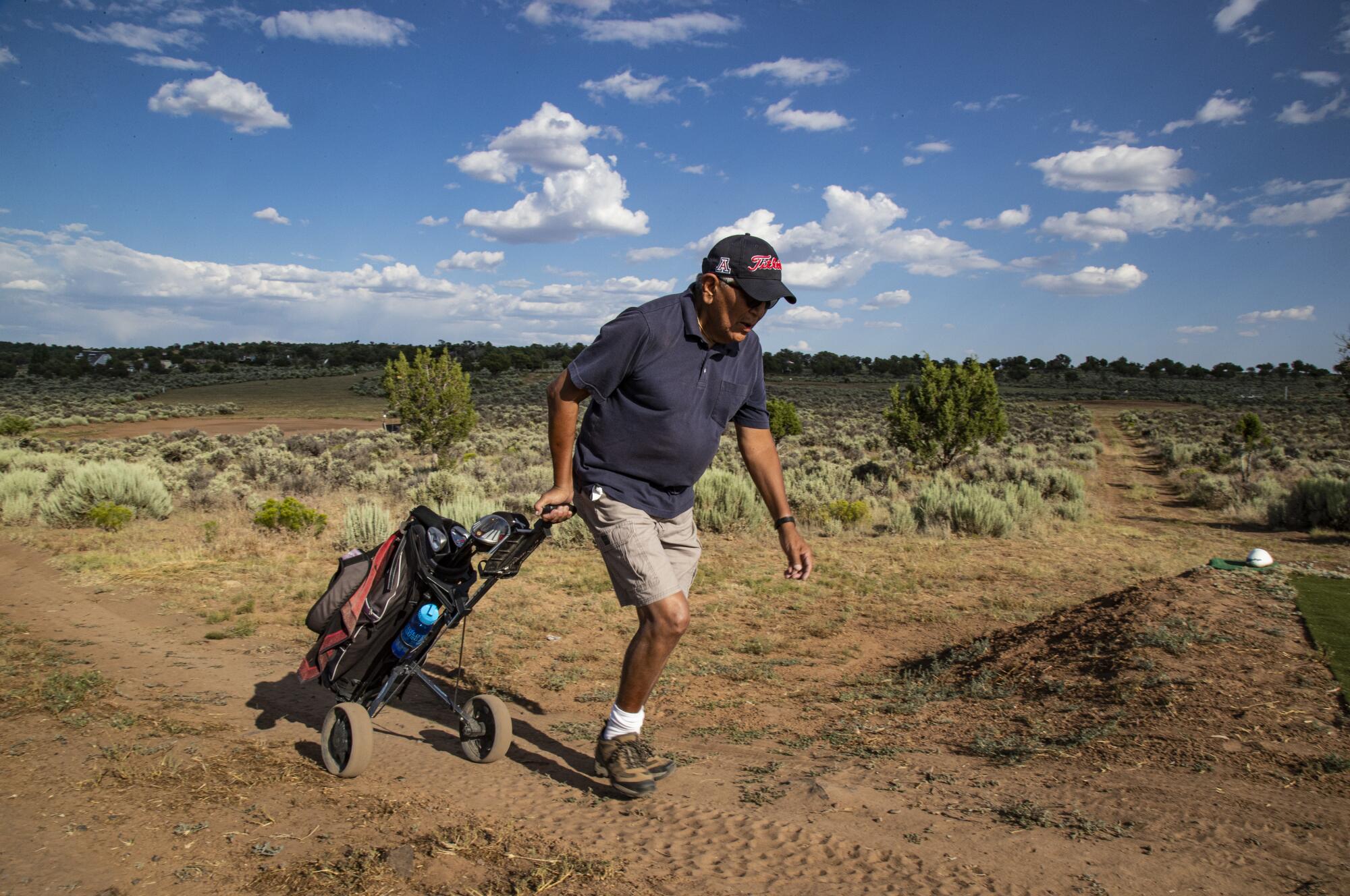
“The browns are the challenging part,” said Emmett Francis, 76. “Sometime the dirt is loose, sometimes it’s like cement. You need the right speed, the right angles, and even then it takes awhile to get the ball into the cup.”
He smacked the ball hard, propelling it 100 yards down the fairway. It hit the brown patch and bounced wildly away. The trick is to land the ball just short of the brown, not on it.
Rez golf rules are similar to those of traditional golf, but with some nuances. There is no out of bounds, no spikes are allowed and players can smooth out rough dirt before a shot. If the ball lands in sage, they can move it the length of a golf club to avoid trampling the medicinal plant.
“This is a totally different animal,” said Karlis Yazzie, 31. “You hit a bad shot in town and you’re still on grass. You hit one here, you’re in sage.”
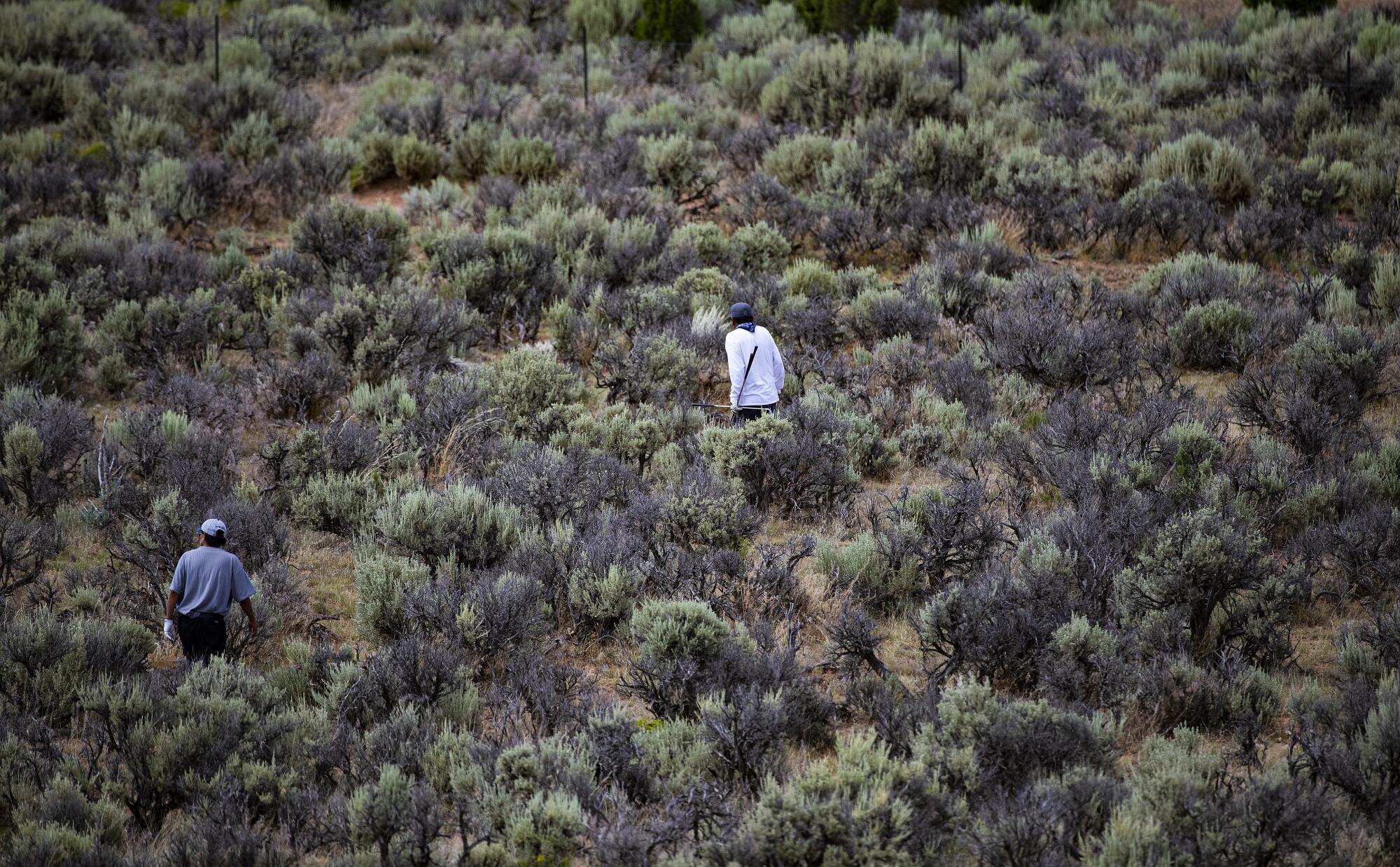
His friend Jack Nacki, 55, was new to the course.
“It’s going to be hugely different than playing on grass,” he predicted.
Karlis Yazzie, no relation to Freddie, nodded.
“But if you try to make it like everywhere else, it will lose its character,” he said. “It won’t be rez golf anymore.”
Dozens of golfers, who each paid a $30 entry fee and competed in teams, now streamed under the canopy. Freddie Yazzie quieted everyone.
“Remember this is rez golf,” he told them. “We allow a lot of things.”
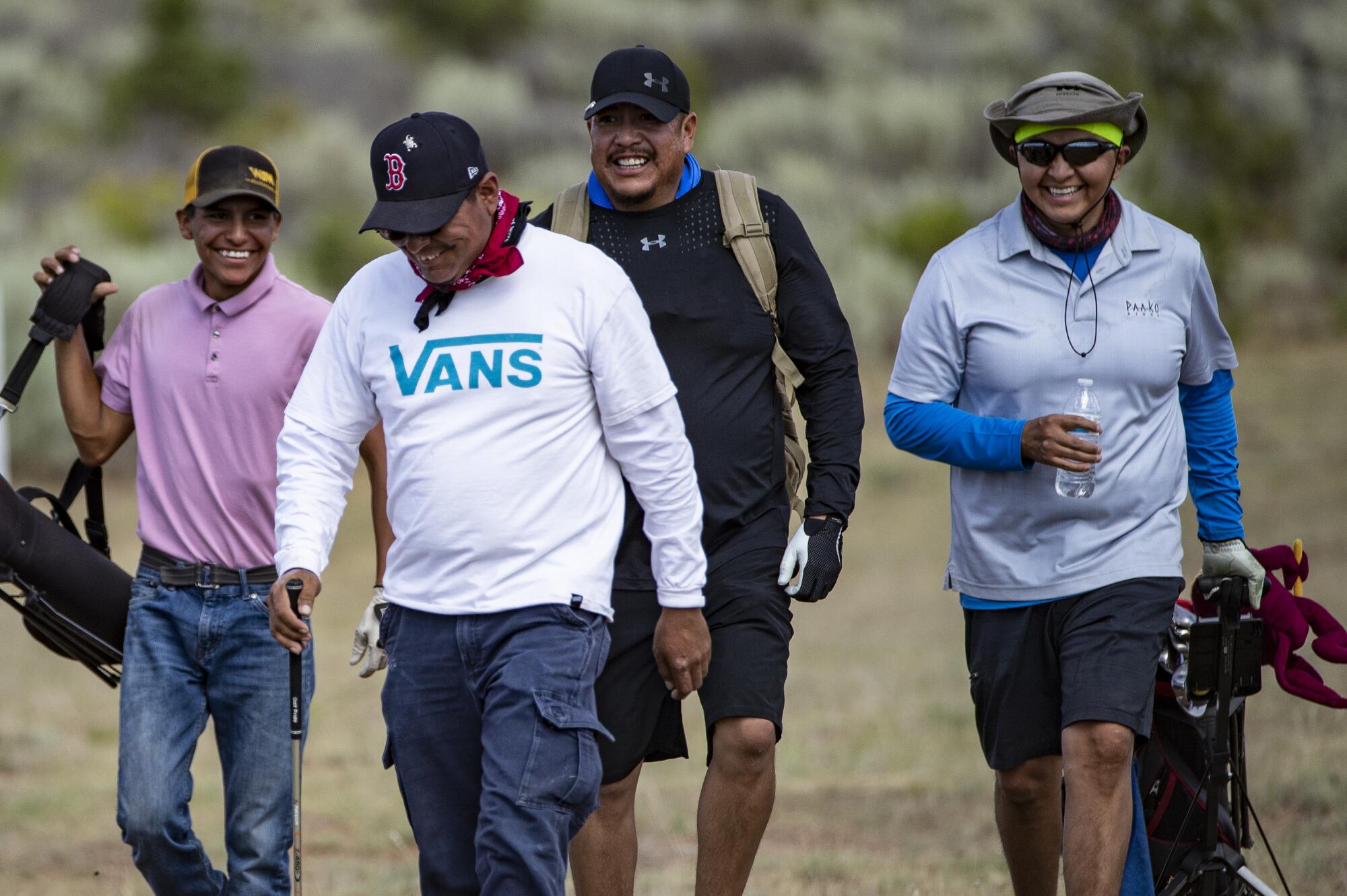
Every player was given an 8-by-10-inch slab of carpet to steady their ball on uneven surfaces.
“Can we use them on the fairways?” asked one player.
“Yes, I can cut some more up if you need it,” Yazzie said.
“How far is it around?” asked another.
“Three miles to walk around the course twice,” Yazzie said. “Drink a lot of water. There is roast mutton on the menu, so be ready for that when you come back.”
Female officers are a key part of the understaffed Navajo Nation Police Department’s approach to one of the toughest policing jobs in America.
The tournament was 18 holes, or twice around the course.
Players hoisted their clubs and marched out.
Milten Harper, 56, stood at the first hole. A rooster crowed in the distance. He poked a tee into the hard ground, lined up and swung. The ball sailed high and landed in the sagebrush.
“Go find it and hit it again,” a fellow golfer advised.
Harper played it where it landed, deftly nudging it up an incline and onto the brown.
“This is totally new to the Navajo. It’s nothing but positive for us,” he said in a low voice as a second golfer teed up. “I grew up here and never heard of golf until we moved to Farmington, New Mexico. I wanted to come out and see what it was all about.”
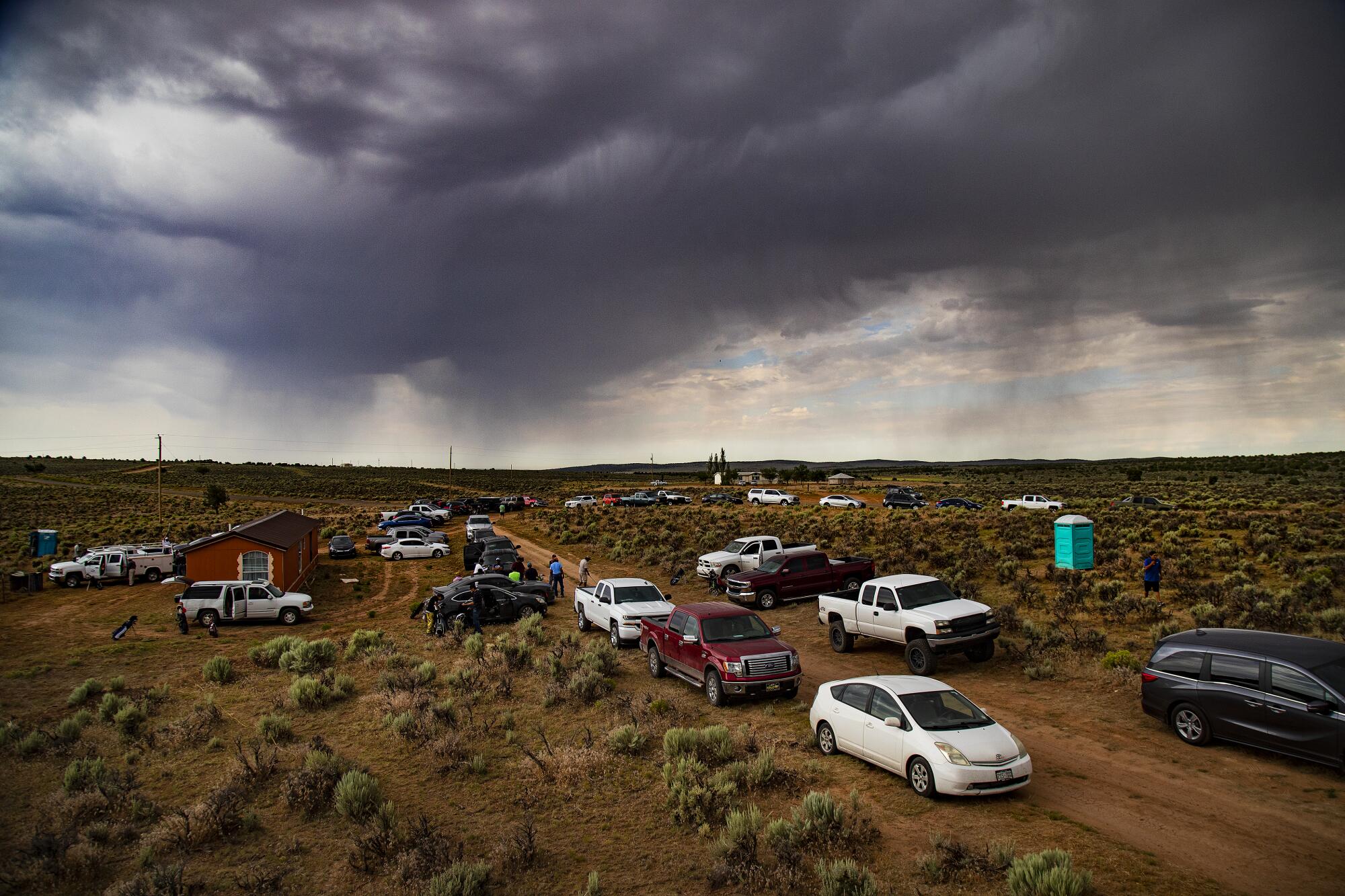
The sky darkened and rain fell. Moments later it stopped. Wind gusts sent balls skittering across the mud surfaces. Players struggled to sink a shot.
Alex Yazza, 58, was waist-deep in sage.
“You hit into the sage and the goal is to get your ball out with some of your dignity intact,” he said. “I’d love to see Tiger Woods or Donald Trump play this course.” Yazza quickly reclaimed his dignity by finding the ball, no small feat, and knocking it out of the brush in a couple of strokes.
Cars and trucks rolling down the highway honked. Families set up chairs to watch. Hot dogs sold for a dollar, sodas for 75 cents. Old men in cowboy hats and women in long dresses reclined under fragrant cedars, turquoise and silver adorning deeply tanned skin. Their speech moved easily between Navajo and English.
A reporter dives into the world of golf on the Navajo reservation.
By noon, it was nearly 100 degrees. Ravens croaked overhead. Knots of golfers in colorful shirts were plinking balls in all directions. A few balls plopped into watering holes for livestock that double as obstacles. No one cursed when they missed a shot, no one argued. Intense concentration mixed easily with laughter and delight.
“I grew up on the rez and miss the sagebrush and blue skies,” said Jim Yazzie, 44, of Phoenix. “It brings people together. As a tribe, we are so infested with drugs and alcohol that it’s great to see something like this.”
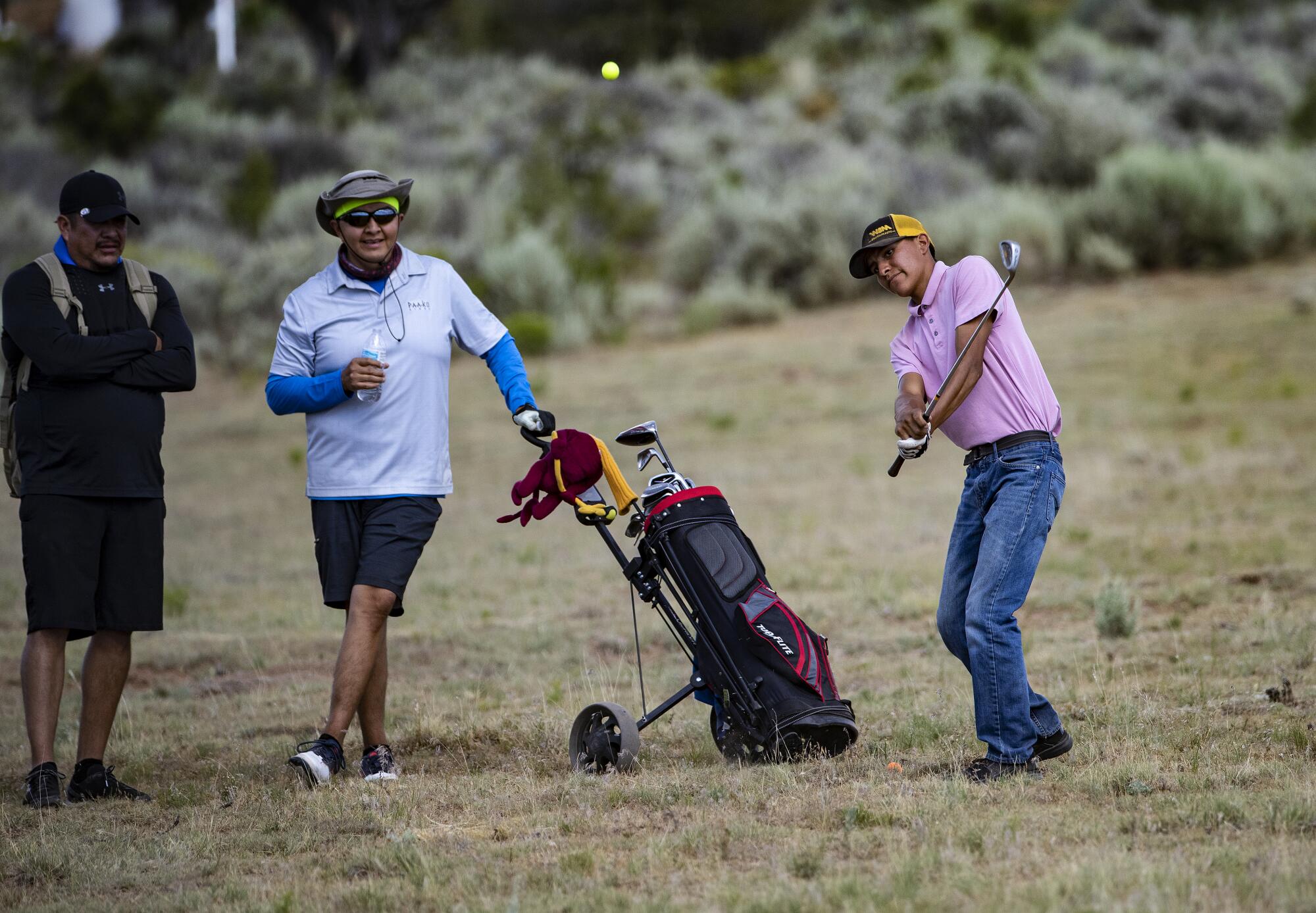
Not far away, Trey Duncan, 17, teed off with a shiny club.
“I got it at Goodwill,” he said. “It only cost two bucks. Everyone buys them there.”
On the other side of the course, Benally, a trim, soft-spoken man, waited his turn.
When he was growing up here, there was little to occupy kids, except “rez ball,” or basketball.
“My nephew got me into golf. I was a bad player. Then I read a book by Tiger Woods that I bought for $19.99 in Gallup. He taught me how to hold the club, how to hinge your wrists.”
He named the course Wagon Trail to Lonesome Pine because his great-great-grandmother lived across the road and would ride a horse-drawn wagon to a pine tree near the family home.
He refuses to alter the character of the course. Animals can graze wherever they like. Step in cow or goat dung — it’s all part of the experience. When balls from one part of the course flew too close to players on another part, Benally, a carpenter, used dead trees to block them.
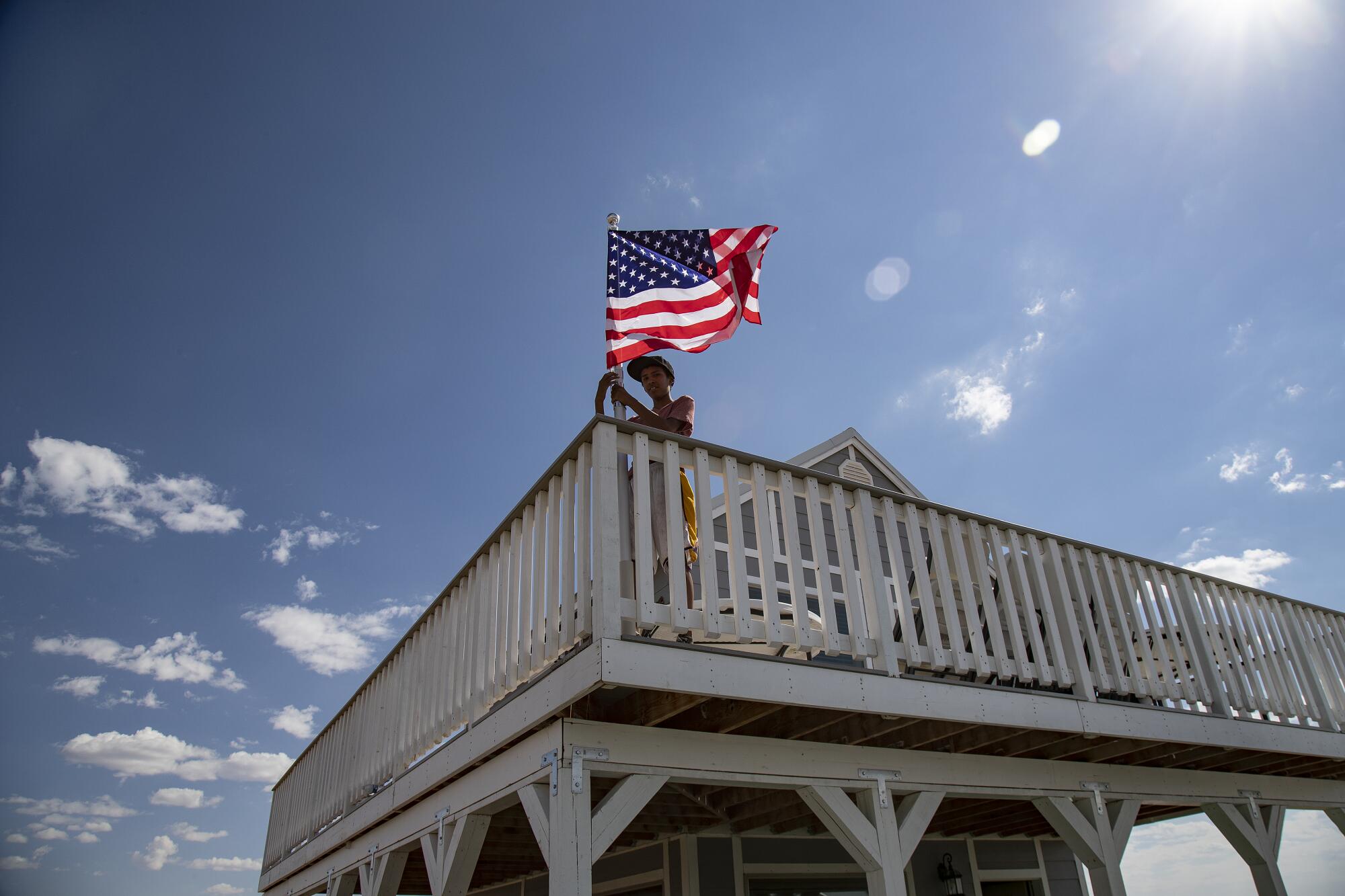
“A net would not be rez style,” he said.
A Hogan, a traditional Navajo dwelling often used for ceremonial purposes, stands on the course.
“It always faces east,” Benally said. “The holy ones will rise and travel through here at dawn.”
As the day wound down, the dying sun coaxed a crimson glow from the rugged landscape. A cool breeze relieved the suffocating heat. A scrawny, low-slung dog scoured the course for something to eat.
Golfers straggled back and lined up outside the clubhouse for dinner.
A woman kneaded dough, flattened it and dropped it into a vat of bubbling Crisco. Players folded mutton and vegetables into the traditional fry bread like enormous tacos.
There was a commotion near the entrance. Someone spilled 200 new clubs donated by a Flagstaff resort onto a table. They quickly disappeared.
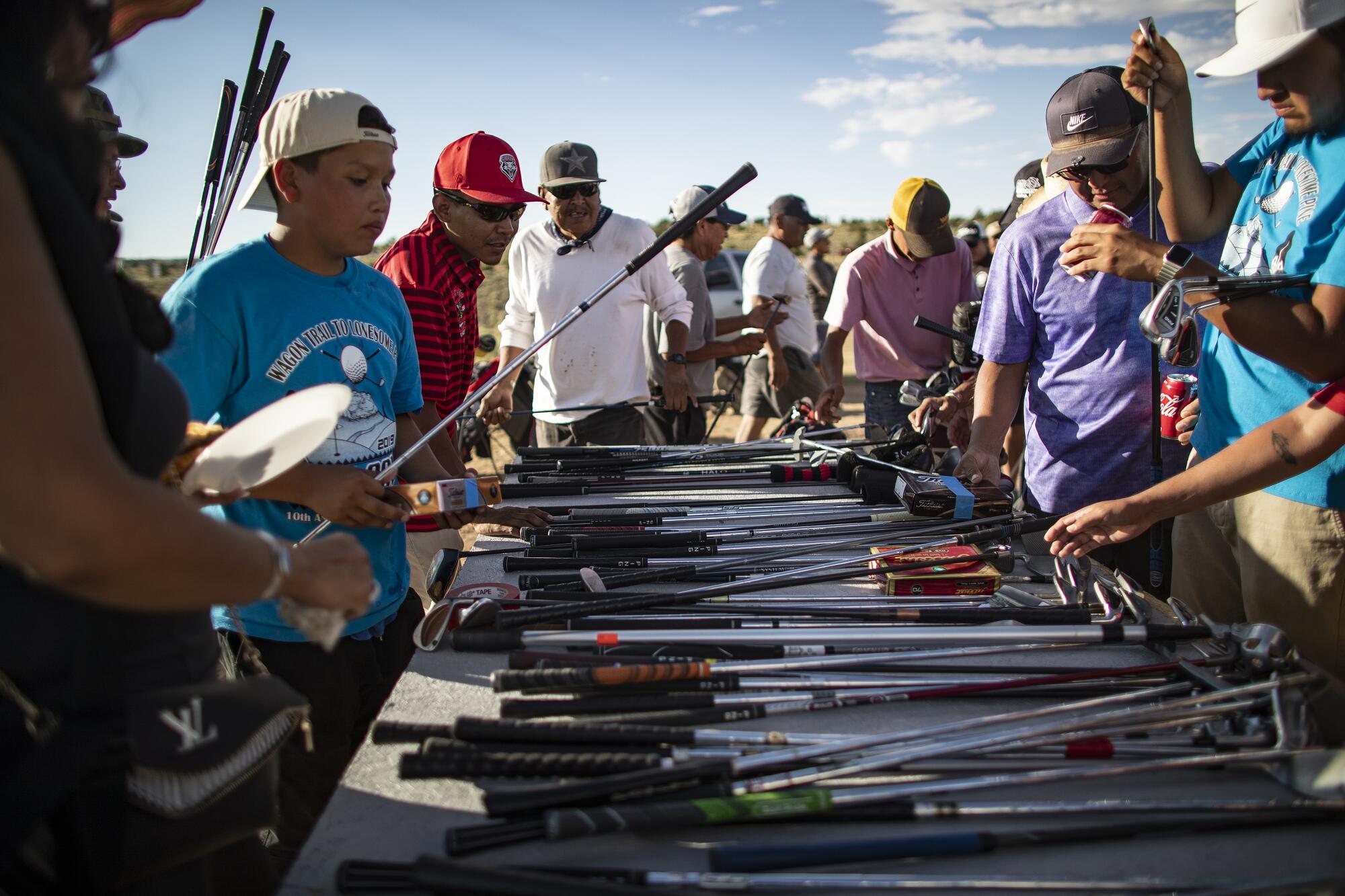
Trey Duncan snagged one.
“But I’m not getting rid of my Goodwill clubs,” he said. “They got me this far.”
Yazzie announced the winners — Robert and Eric Frazier, a father-and-son team who shot an impressive 61 — 1 over par — to bag the $400 prize.
It almost seemed beside the point. This was the biggest turnout ever — nearly 100 golfers and their families. That was the real win.
Navajos don’t like to plan ahead because life is uncertain, Benally said, but he sensed momentum. Maybe a bigger tournament next year, courses for kids, a putt-putt or a driving range.
“This is way beyond our dreams,” he said. “I like where this is heading. I’m thinking expansion.”
More to Read
Sign up for Essential California
The most important California stories and recommendations in your inbox every morning.
You may occasionally receive promotional content from the Los Angeles Times.
